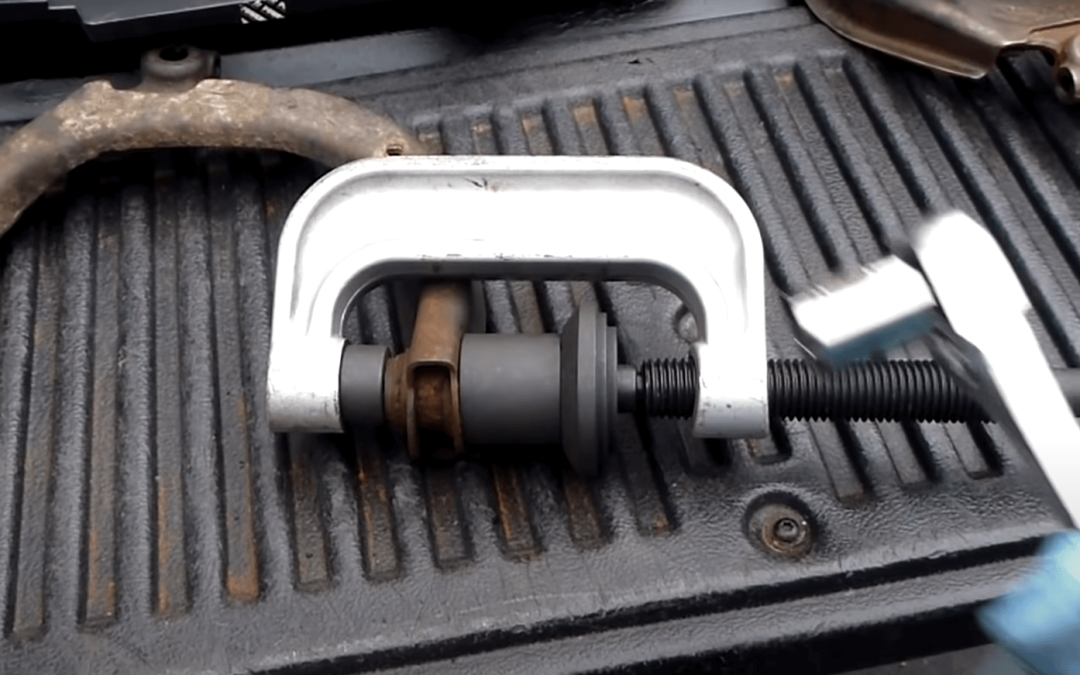Last Updated on August 23, 2023 by Mark S. Taylor
To remove and install car bushings and bearings, follow these steps: first, safely raise the car and remove the wheels. Then, locate the bushings and bearings, and use appropriate tools to remove them.
Finally, install the new bushings and bearings, and tighten everything back in place. Car bushings and bearings are crucial components that help reduce friction and maintain stability in your vehicle’s suspension system. Over time, they can wear out or become damaged, leading to poor handling and increased noise.
To ensure optimal performance and safety, it’s important to know how to remove and install these parts correctly. We will walk you through the process step-by-step, providing you with the knowledge and confidence to complete the task yourself. So let’s get started!
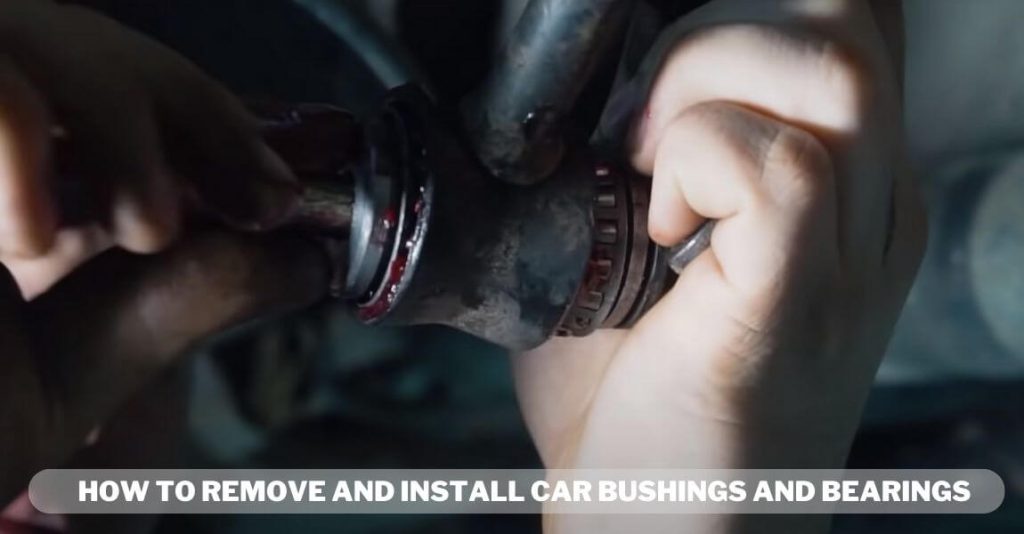
Contents
The Role Of Car Bushings And Bearings In-Vehicle Performance
Smooth and controlled movements:
- Car bushings and bearings play a crucial role in ensuring smooth and controlled movements of various components in your vehicle.
- These components act as a buffer between metal parts, allowing them to move freely and smoothly.
- They help in reducing friction and prevent unwanted movements, ensuring that your car’s suspension system operates optimally.
Absorption of road vibrations:
- Car bushings and bearings are designed to absorb and dampen road vibrations, providing a more comfortable ride.
- They act as a cushion between different parts, reducing the impact of bumps and uneven surfaces on the vehicle.
- By absorbing vibrations, they also help in minimizing the wear and tear on other components, prolonging the lifespan of your car.
Reducing noise and friction:
- Another important role of car bushings and bearings is to reduce noise and friction.
- They act as a barrier between metal parts, preventing direct contact and minimizing friction.
- By reducing friction, they help in reducing energy loss and improve overall vehicle efficiency.
- Additionally, they help in minimizing noise generated from the movement of various components, ensuring a quieter driving experience.
Car bushings and bearings are integral components that contribute to the smooth and comfortable performance of your vehicle. By allowing for smooth and controlled movements, absorbing road vibrations, and reducing noise and friction, they play a vital role in ensuring a pleasant driving experience.
Signs Of Worn-Out Bushings And Bearings
Increased noise and vibration:
- Unusual noises such as squeaking, creaking, or knocking could indicate worn-out bushings and bearings in your car.
- Vibrations that you can feel in the steering wheel or throughout the vehicle are also common signs of deteriorating bushings and bearings.
Uneven tire wear:
- Worn-out bushings and bearings can lead to improper alignment, causing your tires to wear unevenly.
- Look out for bald spots or irregular tread wear on your tires, as this could indicate a problem with the bushings and bearings.
Poor handling and steering control:
- If your steering feels loose or imprecise, it may be due to worn-out bushings and bearings.
- Difficulty in maintaining control of your vehicle, especially during turns or sudden maneuvers, can also be a symptom of deteriorating bushings and bearings.
Remember, it’s important to address these signs of worn-out bushings and bearings promptly to ensure the safety and performance of your car. Regular inspection and maintenance can help prevent more severe issues down the road.
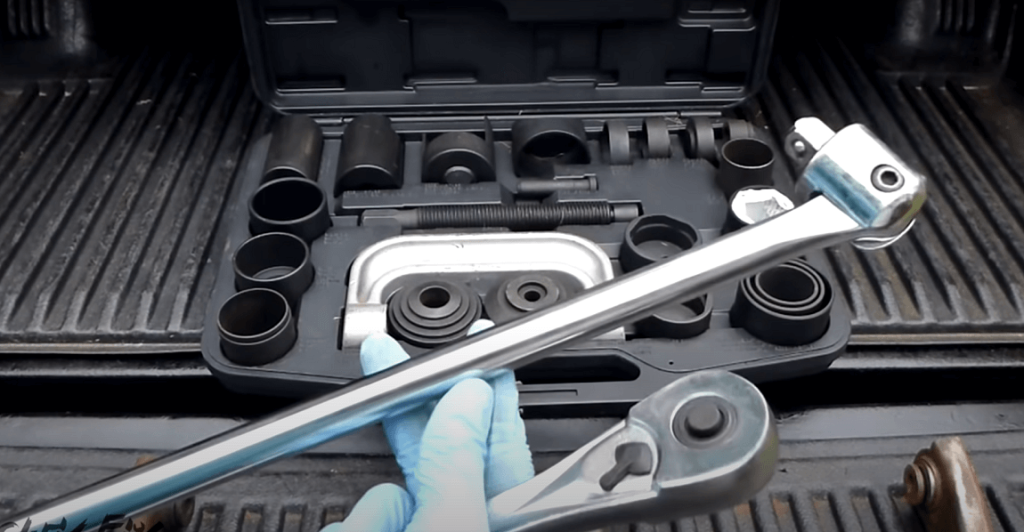
Tools And Equipment Needed
When it comes to removing and installing car bushings and bearings, having the right tools and equipment is crucial. Here are the essentials you’ll need to successfully complete the task:
- Jack and jack stands: These are essential for safely lifting the car off the ground and providing support while you work. Make sure both the jack and jack stands can handle the weight of your vehicle.
- Wrenches and sockets: A set of wrenches and sockets of various sizes will be needed to remove the nuts and bolts holding the bushings and bearings in place. It’s a good idea to have both metric and standard sizes available to cover all possibilities.
- Rubber mallet: This tool will come in handy for gently tapping the bushings and bearings out of their housings. The rubber construction of the mallet helps prevent damage to the components.
- Pry bar or control arm removal tool: Depending on the specific car model, you may need either a pry bar or a control arm removal tool to disconnect the bushings and bearings from the control arm. These tools provide the necessary leverage to detach stubborn parts.
Remember, having the appropriate tools and equipment is essential for a smooth and efficient removal and installation process.
Safety Precautions
Car bushings and bearings are crucial components of a vehicle’s suspension system. Over time, these parts may wear out or become damaged, requiring removal and installation. When working on your car’s bushings and bearings, it’s essential to prioritize safety precautions to prevent accidents and injuries.
This section will guide you through the necessary safety measures to follow during the process.
Use Of Safety Goggles And Gloves:
- Protect your eyes by wearing safety goggles throughout the entire procedure.
- Use protective gloves to shield your hands from potential hazards.
- Safety goggles and gloves provide an essential barrier against any debris, chemicals, or lubricants that may come into contact with your eyes or skin.
Proper Support For The Vehicle:
- Before starting any work, park the car on a level surface and engage the parking brake.
- Use wheel chocks or wedges to secure the tires that will remain on the ground.
- Employ a reliable jack and jack stands to elevate the vehicle. Ensure the stands are correctly positioned and securely hold the car’s weight to avoid any mishaps.
- Elevating the vehicle properly guarantees adequate accessibility and stability during the bushing and bearing removal and installation.
Secure The Removed Parts To Prevent Accidents:
- After removing the old bushings and bearings, it is crucial to secure them safely to prevent any accidental movements or damage.
- Keep removed parts in designated containers or boxes, ensuring they won’t roll or shift during the process.
- Properly label and organize the parts to avoid confusion during reinstallation.
- By securing the removed components, you minimize the risk of tripping, injuries, or damage caused by loose parts.
By following these safety precautions throughout the process of removing and installing car bushings and bearings, you can perform the necessary repairs or replacements efficiently and minimize any potential risks. Remember, prioritizing your safety and taking preventive measures is essential in automotive maintenance and repair.
Stay protected and enjoy the successful completion of your car’s bushing and bearing tasks.
Step 1: Preparing The Vehicle
Before you begin the process of removing and installing car bushings and bearings, it is crucial to properly prepare the vehicle. This step ensures safety and ease during the task. Follow these steps to prepare your vehicle:
- Park on flat ground and engage the parking brake: Find a level surface to park your car and engage the parking brake. This ensures that the vehicle remains stable throughout the process.
- Lift the vehicle using a jack and secure it with jack stands: Use a car jack to lift the vehicle off the ground, placing the jack stands in appropriate positions to support the weight of the car. It is recommended to place the jack stands on sturdy parts of the car’s frame to ensure stability.
By following these steps, you’ll create a safe and stable working environment to proceed with removing and installing car bushings and bearings.
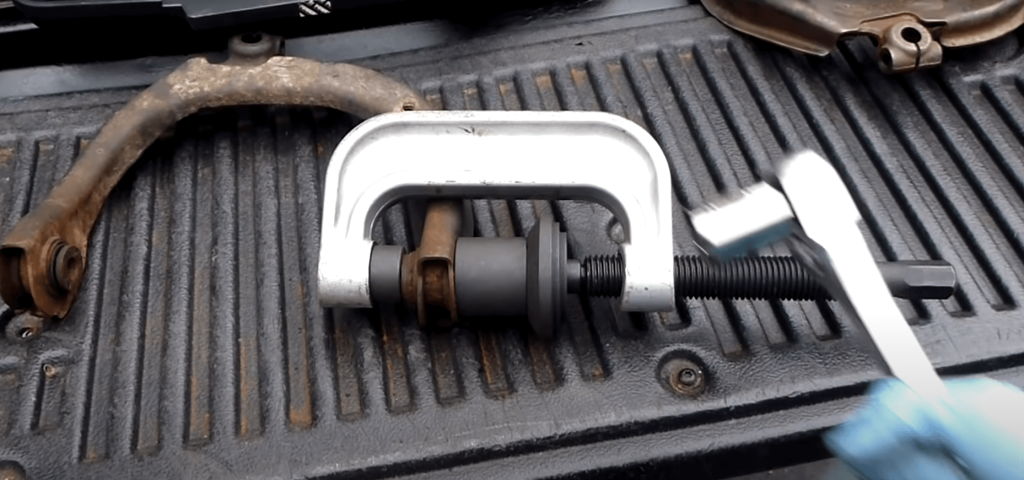
Step 2: Removing The Bushings
When it comes to removing the bushings from your car, there are a few important steps to follow. These steps will help you safely and effectively remove the old bushings so that you can install new ones. Let’s take a closer look at this process:
Identify The Location Of The Bushings
Before you can begin removing the bushings, it’s crucial to identify their location on your car. Bushings can be found in various areas, such as suspension components, control arms, sway bars, and even engine mounts. Take the time to locate the specific bushings you need to remove to ensure a smooth and efficient process.
Remove Any Clamps Or Bolts Securing The Bushing
To remove the bushing, start by inspecting if there are any clamps or bolts securing it. These clamps or bolts may hold the bushing in place, so it’s essential to remove them before proceeding. Use appropriate tools, such as wrenches or pliers, to loosen and remove these fasteners, allowing for easier removal of the bushing.
Use A Rubber Mallet Or Pry Bar To Remove The Old Bushing
Once any clamps or bolts are removed, it’s time to physically remove the old bushing from its location. You can use a rubber mallet or a pry bar to carefully dislodge and pry out the bushing. Be cautious not to damage surrounding components while doing so.
Inspect The Condition Of The Old Bushing
After removing the bushing, take the opportunity to inspect its condition. Look for any signs of wear, cracking, or deformation. If the bushing is damaged or showing significant signs of wear, it’s best to replace it rather than reinstalling it.
Clean The Bushing Housing
Before installing new bushings, it’s essential to clean the bushing housing thoroughly. Remove any dirt, grime, or debris that may have accumulated. This step will ensure proper seating and function of the new bushing.
By following these steps, you’ll be able to remove old bushings from your car effectively. Remember to exercise caution and take your time throughout the process. With the old bushings out, you’ll be ready to install new ones and improve your car’s performance and stability.
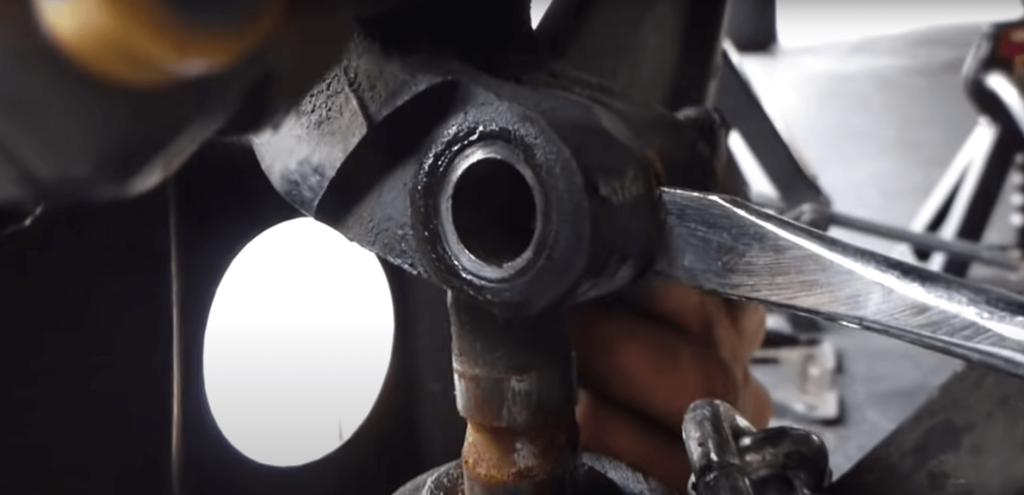
Step 3: Removing The Bearings
Locate The Bearings On The Vehicle
- The first step in removing the bearings from your car is to locate their position on the vehicle.
- Bearings are commonly found in various parts of the car, such as the wheels, suspension system, and drivetrain.
- Refer to your car’s service manual to determine the specific location of the bearings you need to remove.
Remove Any Retaining Clips Or Bolts Holding The Bearings
- Before removing the bearings, check if there are any retaining clips or bolts securing them in place.
- If there are retaining clips, use pliers or a screwdriver to carefully remove them.
- In the case of bolts, use the appropriate socket wrench to loosen and remove them.
Use A Hammer Or Bearing Puller To Remove The Old Bearings
- Once any retaining clips or bolts have been removed, you can proceed to remove the old bearings.
- One method is to use a hammer by tapping the bearing from the side until it starts to come loose.
- Alternatively, you can use a bearing puller tool designed specifically for this purpose. The puller applies pressure to the bearing, gradually pulling it out.
Remember to exercise caution while removing the bearings to avoid damaging surrounding components or the bearing itself.
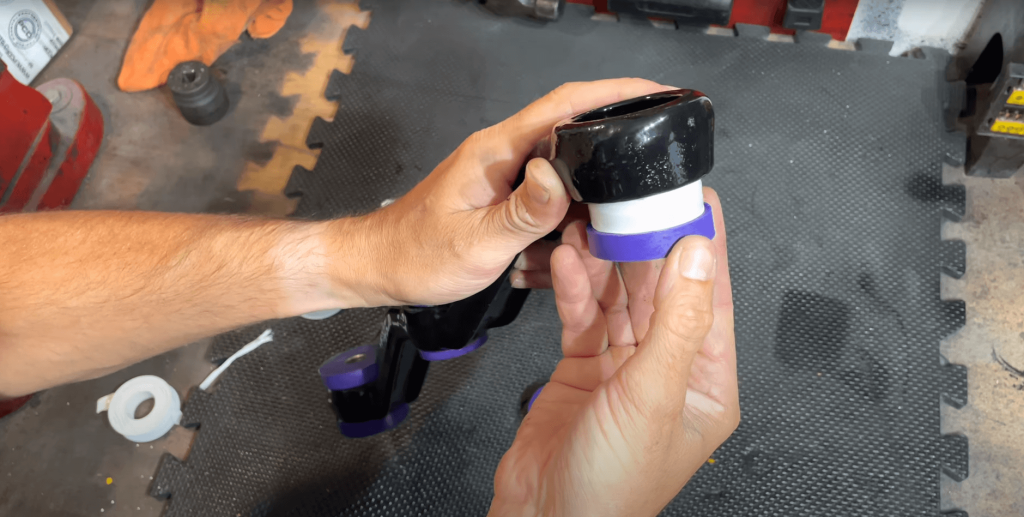
Step 1: Preparing The New Bushings And Bearings
Inspect The New Bushings And Bearings For Any Damage
Before installing new bushings and bearings in your car, it’s crucial to thoroughly inspect them for any signs of damage. Here’s what you need to look out for:
- Check for cracks or splits in the rubber of the bushings. Damaged rubber can affect the performance and stability of your car.
- Examine the metal casing of the bushings for any signs of corrosion or excessive wear. This can occur over time and may require replacement.
- Inspect the bearings for any dents, scratches, or abnormal wear patterns. Damaged bearings can lead to increased friction and potentially cause premature failure.
By inspecting the new bushings and bearings before installation, you can ensure that they are in optimal condition and will provide reliable performance for your car.
Apply A Thin Coat Of Lubricant To The New Parts
Once you’ve inspected the new bushings and bearings and found them to be free of any damage, it’s time to apply a thin coat of lubricant.
Here’s how to do it properly:
- Choose a high-quality lubricant specifically designed for automotive applications. This will ensure proper lubrication and enhance the longevity of the parts.
- Start by cleaning the surfaces of the bushings and bearings using a cloth or brush. Remove any dirt, debris, or residue that could interfere with proper lubrication.
- Apply a thin, even coat of lubricant to all sides of the bushings and bearings. Be sure to cover the entire surface area.
- Make sure the lubricant penetrates into any crevices or hard-to-reach areas of the parts.
- Avoid applying excessive amounts of lubricant, as it can attract dirt and impede the smooth operation of the bushings and bearings.
By applying a thin coat of lubricant, you’ll ensure adequate lubrication, minimize friction, and promote smooth movement of the new bushings and bearings in your car.
Step 2: Installing The Bushings
Align The New Bushing With The Mounting Hole:
- Before installing the bushing, make sure it is properly aligned with the mounting hole in your car. This will help ensure a secure and efficient installation. Here’s how to align the new bushing:
Use A Rubber Mallet Or Similar Tool To Tap The Bushing Into Place:
- After aligning the bushing with the mounting hole, gently tap it into position using a rubber mallet or a tool specifically designed for this purpose. The purpose of tapping is to ensure that the bushing is fully inserted and seated correctly.
Secure The Bushing With Clamps Or Bolts:
- Once the bushing is in place, it’s important to secure it tightly to prevent any movement or play. You can achieve this by using clamps or bolts. Here’s how to secure the bushing:
- Option 1: Use clamps – place clamps around the bushing and tighten them gradually, making sure they are evenly distributed and apply enough pressure to hold the bushing firmly in place.
- Option 2: Use bolts – if your car’s design allows, you can secure the bushing with bolts. Insert the bolts through designated holes and tighten them using appropriate tools. Be careful not to overtighten, as it may damage the bushing or the mounting hole.
Remember, properly securing the bushing is crucial for its optimal functionality and longevity. Take your time to ensure a secure installation, and always refer to your car’s manufacturer guidelines for specific instructions.
Step 3: Installing The Bearings
Align The New Bearing With The Mounting Location
Aligning the new bearing properly is crucial to ensure smooth functioning and longevity of your car’s suspension system. Follow these steps to align the bearing accurately:
- Start by thoroughly cleaning the mounting location to remove any dirt or debris that could hinder alignment.
- Carefully inspect the bearing and the mounting location for any signs of damage or wear. Replace any damaged components before proceeding.
- Check the manufacturer’s specifications for the correct orientation of the bearing. This information is often provided in the car’s service manual.
- Position the new bearing in the correct orientation, aligning it with the mounting location.
- Use your hands to firmly hold the bearing in place while you move on to the next step.
Use A Hammer Or Bearing Installation Tool To Press The Bearing Into Place
To ensure the bearing is securely installed, you can use either a hammer or a bearing installation tool. Follow these steps:
- If using a hammer, choose a soft-faced mallet to prevent damage to the bearing. Place the mallet against the outer race of the bearing and gently tap it, applying even pressure.
- Make sure to work your way around the bearing, tapping it gradually and evenly, until it is fully seated in the mounting location.
- If using a bearing installation tool, refer to the tool’s instructions for proper usage. These tools are designed to provide controlled and even pressure during installation.
- Slowly and steadily apply pressure with the installation tool, ensuring the bearing is properly seated in the mounting location.
Secure The Bearing With Retaining Clips Or Bolts
Once the bearing is in place, securing it with retaining clips or bolts is essential for stability and safety. Follow these steps:
- If your car’s suspension system uses retaining clips, carefully align them with the designated holes on the bearing and the mounting location.
- Gently press the retaining clips into place, ensuring they are securely fastened. Double-check that they are properly aligned and seated.
- If your car’s suspension system requires bolts, insert them through the designated holes on the bearing and the mounting location.
- Tighten the bolts gradually and evenly, using the recommended torque specifications provided by the manufacturer.
- Double-check the tightness of the bolts to ensure the bearing is securely fastened and there is no excessive play or movement.
Remember to refer to your car’s service manual for specific instructions and torque specifications for your particular vehicle model.
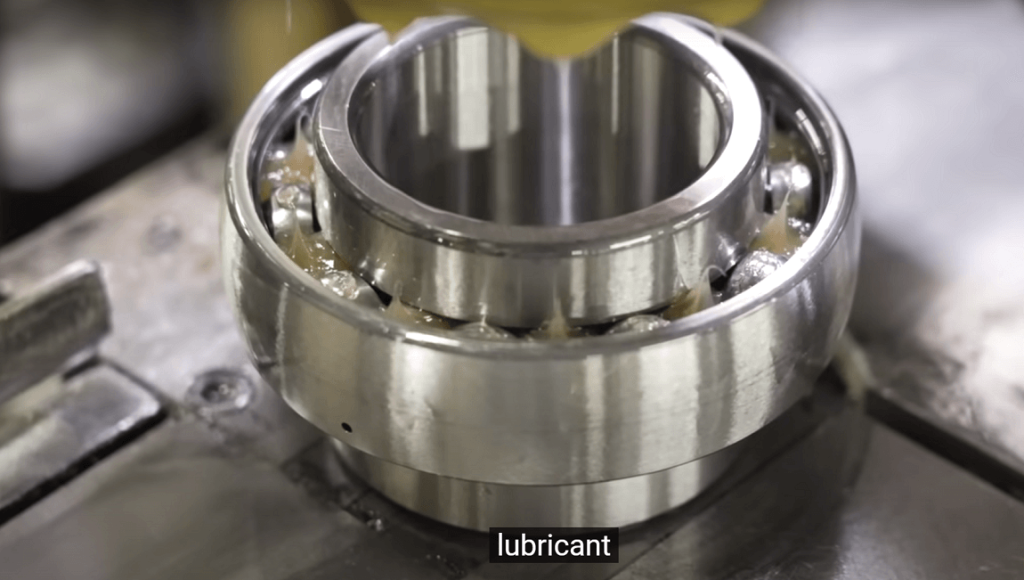
Regular Inspection And Lubrication
Regular inspection and lubrication are essential to ensure the proper functioning of car bushings and bearings. By inspecting them regularly, you can identify signs of wear or damage and take appropriate action to prevent further issues. Additionally, applying lubricant to these components will help reduce friction, prolong their lifespan, and maintain smooth operation.
Here’s what you need to know about inspecting bushings and bearings and applying lubricant effectively:
Inspect The Bushings And Bearings For Signs Of Wear Or Damage
- Check for any cracks, tears, or signs of distortion on the bushings. These can indicate that they are worn out or damaged and need to be replaced.
- Examine the bearings for any excessive play or looseness. If there is noticeable movement when you try to wiggle them, it’s a sign that they may need to be replaced.
- Look for signs of corrosion or rust on both the bushings and bearings. This can compromise their performance and lead to further damage if not addressed promptly.
- Pay attention to any unusual noises, such as squeaking or grinding sounds when steering or driving over bumps. These could be indications of worn-out bushings or bearings.
- Inspect the rubber or polyurethane material of the bushings for hardness or deterioration. If they have become stiff or brittle, it’s a sign that they are no longer functioning properly.
Apply Lubricant To Ensure Proper Functioning And Reduce Friction
- Choose a suitable lubricant for your car’s bushings and bearings. Synthetic greases are commonly recommended as they provide excellent lubrication and are resistant to extreme temperatures.
- Apply the lubricant using a grease gun or by hand. Ensure that you cover all the moving parts and surfaces of the bushings and bearings.
- Be cautious not to over-grease the components, as excess grease can attract dirt and debris, causing more harm than good.
- Regularly apply lubricant to maintain smooth movement and reduce friction. Frequency may vary depending on the manufacturer’s recommendations, but it’s generally recommended to lubricate every 6 months or as needed.
- Lubrication will help prevent premature wear and damage, ensuring that your car’s bushings and bearings continue to function properly.
Remember, regular inspection and lubrication are crucial for maintaining the longevity and performance of your car’s bushings and bearings. By being proactive in caring for these components, you can minimize the risk of inconvenient breakdowns and costly repairs.
Avoid Harsh Driving Conditions
Reduce Stress On The Bushings And Bearings By Avoiding Rough Roads And Aggressive Driving:
Driving habits have a significant impact on the lifespan and performance of car bushings and bearings. Although these components are designed to handle various road conditions, subjecting them to harsh driving conditions can accelerate wear and tear. By adopting some simple habits and precautions, you can prolong the life of your bushings and bearings and maintain a smooth driving experience.
Here are some recommendations:
- Smooth driving:
: drive gently, avoiding sudden acceleration, harsh braking, and quick turns. These aggressive maneuvers put excessive stress on the bushings and bearings, reducing their longevity.
- Choose roads wisely:
: when possible, opt for well-maintained, smooth roads to minimize the impact on your car’s suspension system. Avoid roads known for their rough surface, potholes, or other potential hazards that can increase stress on the bushings and bearings.
- Slow down on speed bumps:
: approach speed bumps and road humps slowly and cautiously to reduce the impact on the suspension system. Gradually increase your speed after clearing the bump.
- Steer clear of potholes:
: try to avoid or cautiously maneuver around potholes as they can cause significant damage to your car’s bushings and bearings. Keep a safe distance from the car in front of you to anticipate and navigate around potholes in advance.
- Be mindful of curbs and obstacles:
: take extra care when parking or driving near curbs, as accidental contact can strain the suspension components. Similarly, be cautious when navigating over obstacles such as debris and speed bumps.
By following these suggested practices and being mindful of your driving habits, you can reduce stress on your car’s bushings and bearings, contributing to their longevity and maintaining a smooth and comfortable ride. Remember, a little extra care can go a long way in preserving the health of your vehicle’s suspension system.
Timely Replacement
Replace Worn-Out Bushings And Bearings As Soon As Signs Of Wear Or Damage Are Noticed:
- Damaged bushings and bearings can lead to poor vehicle performance, increased vibration, and potential safety hazards. As a responsible car owner, it’s crucial to pay close attention to your vehicle’s bushings and bearings and replace them promptly when signs of wear or damage are noticed.
- Here are some common signs indicating the need for replacement:
- Excessive movement or play in the suspension system.
- Unusual noise, such as squeaking, clunking, or grinding when driving over bumps or making turns.
- Uneven tire wear or abnormal tire wear patterns.
- Vibrations felt in the steering wheel or vehicle body.
- Leaking or damaged seals on the bushings or bearings.
- Difficulty steering or controlling the vehicle.
- By taking immediate action and replacing worn-out bushings and bearings, you can ensure the smooth and safe operation of your car while preventing any further damage.
Regularly Check The Manufacturer’S Recommendations For Replacement Intervals:
- To maintain optimal performance and safety, it’s important to follow the manufacturer’s recommendations for replacing bushings and bearings.
- Check the owner’s manual or consult the manufacturer’s website to determine the specified replacement intervals for different components of your vehicle’s suspension system.
- Factors such as driving conditions, mileage, and overall wear and tear can influence the replacement intervals, so it’s important to stay updated on the latest recommendations.
- Adhering to the manufacturer’s guidelines will help you identify when it’s time for inspections and replacements, preventing potential issues and ensuring your car operates at its best.
Remember, replacing worn-out bushings and bearings promptly and following the manufacturer’s recommendations for replacement intervals is essential for maintaining the smooth operation and safety of your vehicle. Don’t overlook these crucial maintenance tasks to ensure a comfortable and enjoyable driving experience.
Frequently Asked Questions Of How To Remove And Install Car Bushings And Bearings
How Can I Tell If My Car Needs New Bushings Or Bearings?
If you notice excessive play or noise when turning or going over bumps, it may indicate worn out bushings or bearings. Look for signs of wear, tear, or damage such as cracks, splits, or leaks. Consulting a professional mechanic can help diagnose and replace any faulty components.
What Tools Do I Need To Remove And Install Car Bushings And Bearings?
To remove and install car bushings and bearings, you may need a variety of tools including a press tool, a bearing puller, a ball joint separator, a torque wrench, and various socket and wrench sizes. Refer to your car’s manual for specific instructions or consult a professional for assistance.
Can I Replace Car Bushings And Bearings On My Own?
While it is possible to replace car bushings and bearings yourself, it requires specialized tools and knowledge. If you are experienced and have the necessary tools, you can try diy replacement. However, if you are unsure or inexperienced, it is recommended to seek the help of a professional mechanic to ensure proper installation and avoid further damage to your car.
Conclusion
The process of removing and installing car bushings and bearings can seem daunting at first, but with the right tools and a step-by-step approach, it can be accomplished by even the most novice car enthusiasts. By understanding the signs of wear and tear on these components, you can preemptively replace them and improve the overall performance and safety of your vehicle.
Remember to consult your car’s manual for specific instructions and always take the necessary precautions when working under a vehicle. Don’t forget to use high-quality replacement parts and follow proper torque specifications to ensure a secure and long-lasting fit. With a little patience and some basic mechanical knowledge, you can successfully tackle this diy project and save money on costly repairs.
So, go ahead and give it a try – your car will thank you!

